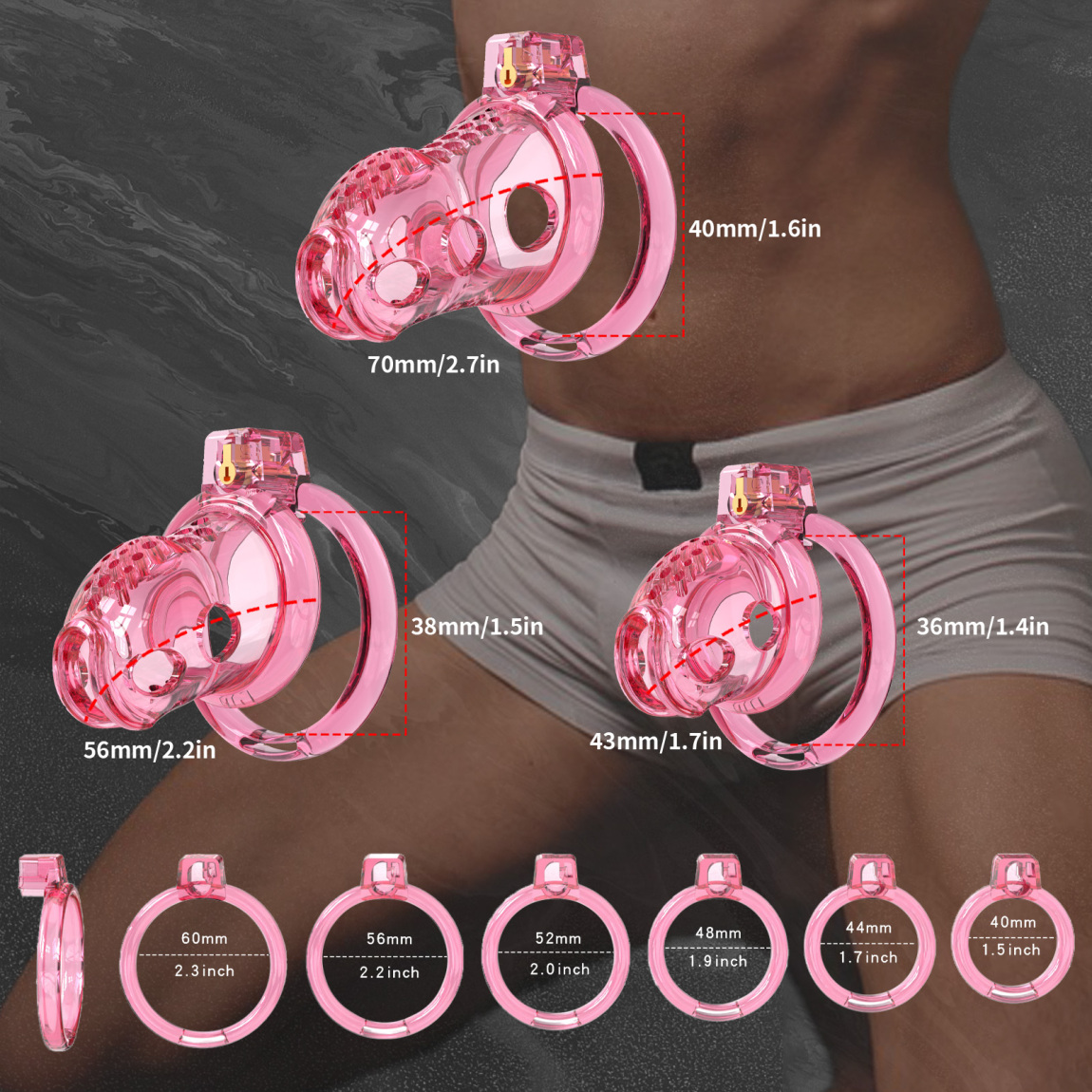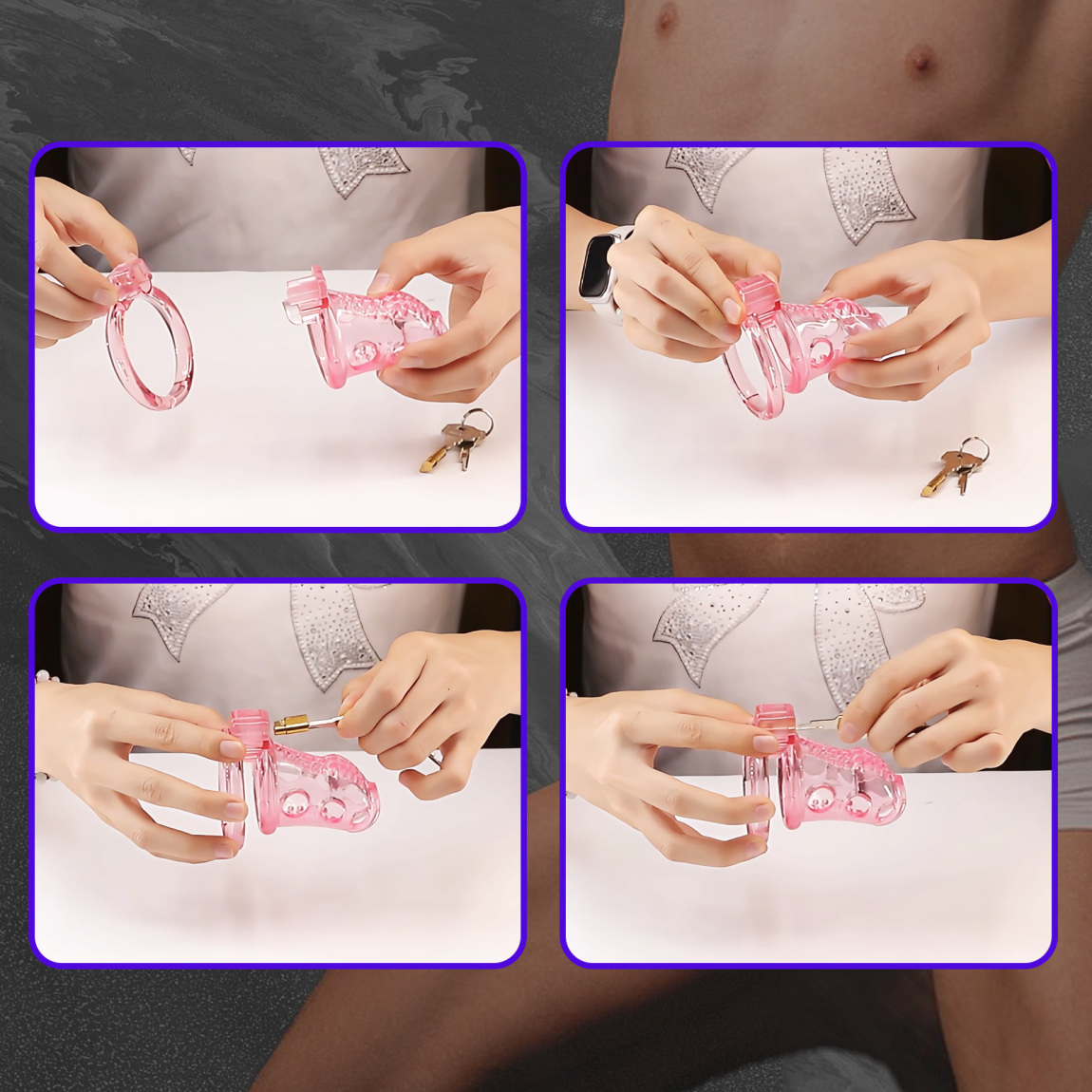Chastity Cage Chafing Secrets: End Pain Forever
2025-09-15
Wearing a chastity cage for long periods can be exciting and rewarding, but many users face one common challenge: chastity cage chafing. Friction between the device and the skin can lead to soreness, redness, and even small wounds if left unchecked. Without the right care, what should be a pleasurable experience quickly turns into irritation and frustration. This guide explains practical ways to prevent chafing and manage chastity chafing for a safe, comfortable journey. The advice draws on real experiences and product knowledge from Rupipichastity, a trusted name for high-quality chastity solutions.
Understanding Chastity Cage Chafing
Chafing occurs when the skin rubs repeatedly against the cage or ring, generating heat and micro-tears. Over time, even mild friction can become painful. Knowing the causes and early warning signs is the first step toward prevention.
Common Causes
-
Incorrect ring size or poor fit
-
Lack of proper lubrication during long wear
-
Neglecting regular cleaning or adjustments
-
Rough edges or poorly finished surfaces
Early Signs
-
Redness or a slight burning sensation
-
Dry or flaky skin patches around the ring
-
Tenderness that worsens when moving or bending
Recognizing these signs early makes it easier to take action before the discomfort becomes serious.
Choose the Right Chastity Device
Selecting a high-quality cage is the most effective way to reduce chastity cage chafing.
Find the Correct Size
Measure carefully before purchase. A ring that is too tight may cut off circulation, while one that is too loose can shift and rub against the skin.
Material Matters
Choose medical-grade stainless steel or smooth, soft-coated plastics. Brands like Rupipichastity polish edges to lower friction and protect delicate skin.
Adjustable Design
Cages with adjustable rings or spacers let you fine-tune the fit as your body adapts, ensuring comfort during longer wear.
Test Before Long Sessions
Wear the cage for short periods first. A trial run helps you identify pressure points and make adjustments before committing to extended use.
Lubrication and Skin Protection
Good lubrication is key to avoiding chastity chafing. Proper products reduce friction and keep the skin flexible.
Types of Lubricants
-
Water-based: Easy to clean and safe for most materials
-
Silicone-based: Long-lasting and ideal for extended wear
-
Hybrid: Combines the benefits of both
Apply a thin layer around the base ring and high-friction spots. Reapply after cleaning or if dryness appears.
Daily Skin Care
-
Wash gently with mild soap and warm water
-
Pat dry with a soft towel before reapplying lube
-
Use a gentle moisturizer at night to keep skin supple
Even a few minutes of care each day can prevent long-term irritation.
Routine Cleaning and Maintenance
Hygiene is essential for preventing chastity cage chafing and protecting skin health.
Cleaning Steps
-
Remove the cage regularly according to your schedule.
-
Rinse with warm water and a fragrance-free cleanser.
-
Dry thoroughly before locking back in place.
Check for Damage
Inspect the device for rough edges or cracks. Replace or repair damaged parts immediately to avoid friction injuries.
Air Out the Skin
Whenever possible, allow your skin to breathe between sessions. Short breaks reduce moisture buildup and lower the risk of infection.
Adjusting Wear Time
Even with the best preparation, your skin needs breaks.
Gradual Training
Start with short sessions and slowly increase wear time. This helps your body adapt and reduces the chance of chafing.
Rest Days
Plan regular intervals without the cage to let the skin recover. A few hours of freedom can prevent irritation from becoming serious.
Listen to Your Body
If you notice persistent redness or pain, reduce wear time immediately. Pushing through discomfort can cause long-term damage.
Clothing and Lifestyle Tips
Daily habits can either protect or irritate the skin.
Choose Breathable Fabrics
Wear underwear made of cotton or moisture-wicking materials to reduce sweat buildup and keep skin dry.
Stay Hydrated
Proper hydration keeps skin elastic and less likely to break under friction.
Move Smartly
Avoid sudden movements or intense activity without checking the device for fit. Simple adjustments during the day can prevent chafing.
Use Protective Barriers
Some users apply a thin layer of medical-grade tape or soft silicone sleeves on pressure points for added comfort.
When to Seek Medical Advice
If chafing becomes severe or you notice open sores, stop wearing the device and consult a healthcare professional. Ignoring these signs can lead to infections, scarring, or long-term sensitivity.
Final Thoughts
Extended chastity can be a rewarding lifestyle choice when managed with care. By choosing a high-quality device from a trusted brand like Rupipi Chastity, using the right lubricants, and following a consistent cleaning routine, you can protect your skin and enjoy the experience without pain. Good habits, gradual training, and attention to early warning signs will keep chastity cage chafing under control and reduce the risk of chastity chafing, allowing long-term wear to remain safe and satisfying.









